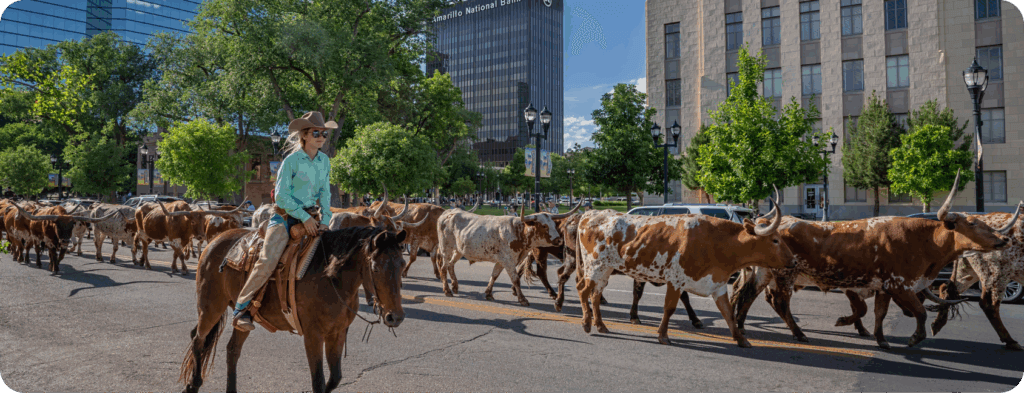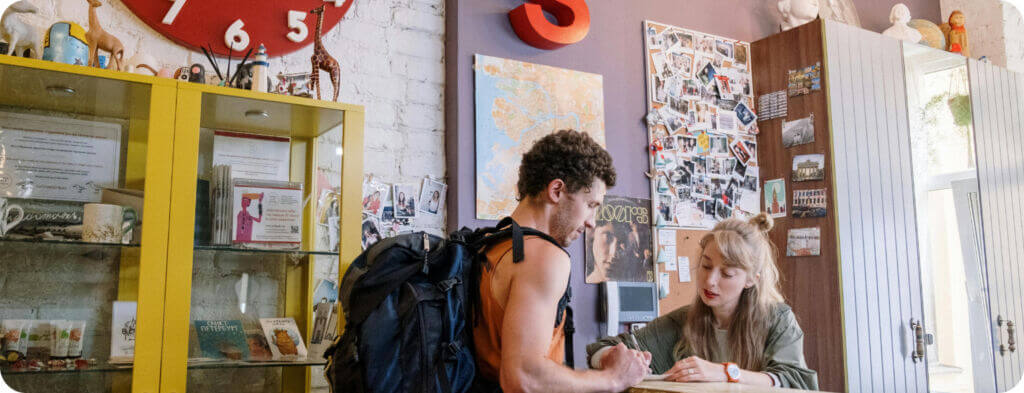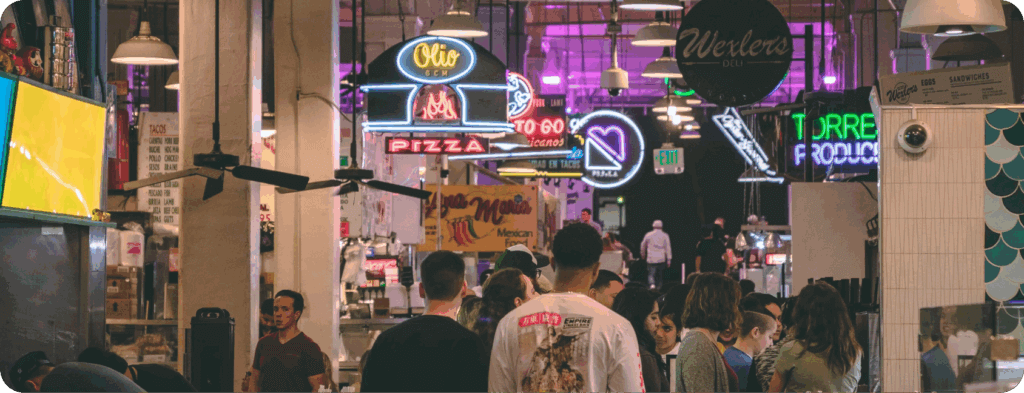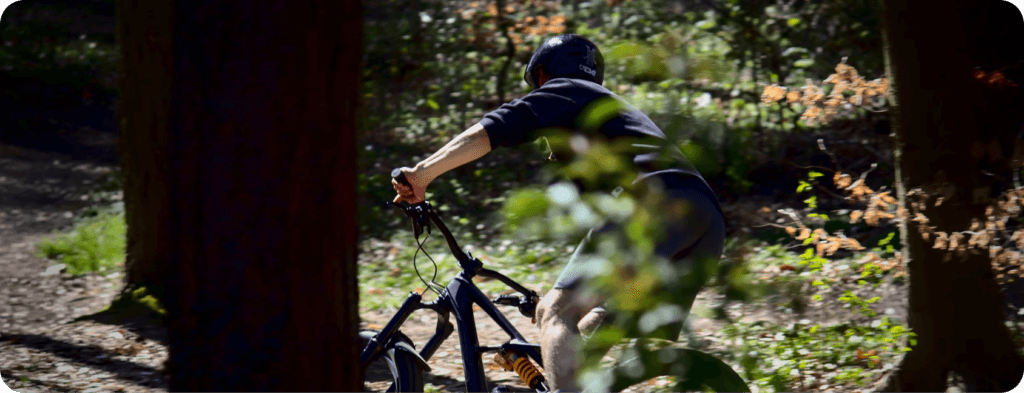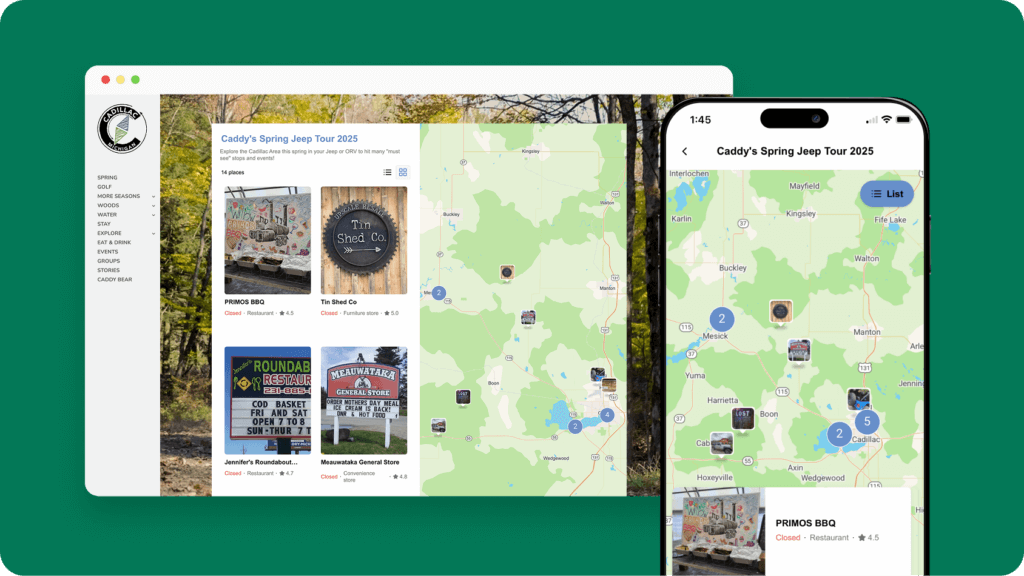
What’s ahead
Remember the good ol’ days when all it took to book a vacation was a few brochures and a trip to the local travel agent?
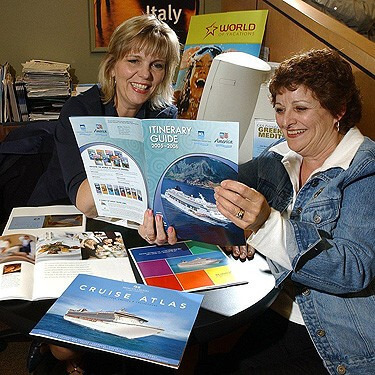
Just look at how much FUN they are having?! (Image source)
Okay—time to take the rose-tinted glasses off 🤓
There’s nothing wrong with how we used to plan travel. But we now have a heck of a lot more control over what our next adventure looks like thanks to the internet. Hilton’s 2024 Trends Report found 85% of travelers now prioritize experiences, and 81% want to explore the unknown.
A tour in a mass-produced travel brochure… probably won’t tick these boxes.
But a friend’s Instagram Reel about a destination they’ve just visited will grab our attention. We might see an activity on a TikTok video from a trusted travel influencer we also want to experience, or even a cool new restaurant on a small creator’s channel tucked away in a quiet corner on YouTube.
DMOs and tour operators know this is the type of travel content that will speak to people in 2024. But sourcing and creating it is still an uphill battle.
In this guide, we will take a deep dive into how travel content has evolved, what content is succeeding on social media, and how the right tools can make it possible to create it for your own travel campaigns.
Let’s get started 👇
What Is Travel Content?
Travel content can be defined as assets like blog posts, photographs, short-form/long-form video and interactive content used to promote a brand or destination.
Unlike traditional marketing content, travel content doesn’t explicitly advertise a brand or attraction. Instead, it provides valuable information to an audience to help them plan a trip to get the most out of a specific destination. Additionally, it can help destinations give their region a unique voice.
In the 1950s, there wasn’t a ton of content around, so tourists relied on recommendations from travel guides like Arthur Frommer. In the 1980s, thousands of people carried Lonely Planet’s India, A Travel Survival Kit around to travel the country on a shoestring budget.
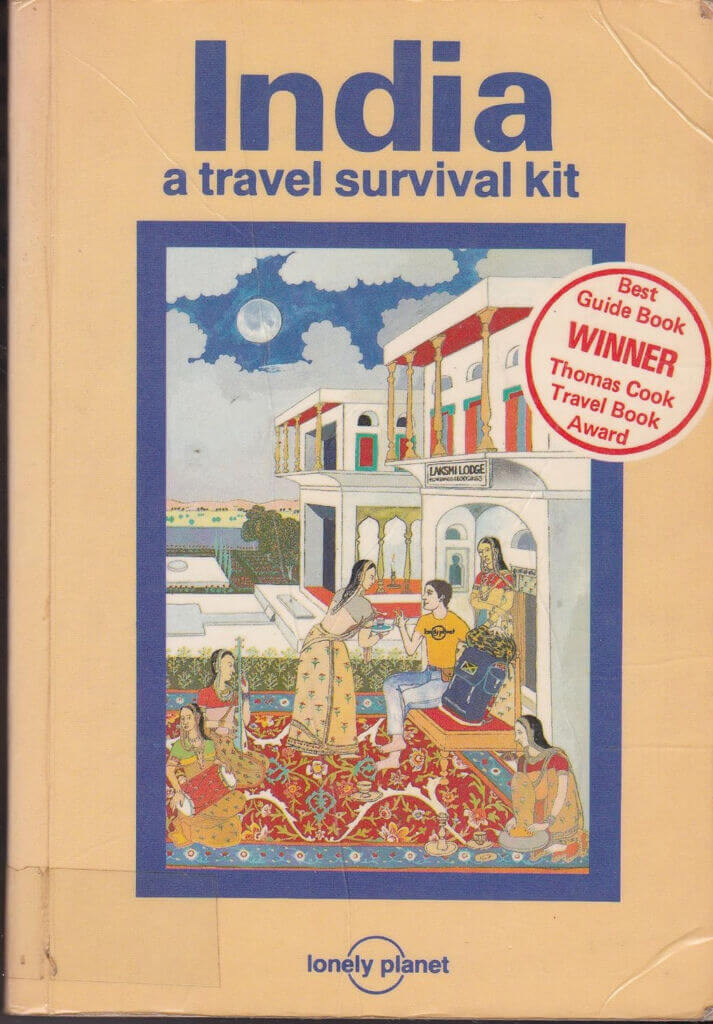
A (super early) Lonely Planet guide from the 1980s.
That’s all changed thanks to the internet.
Now, travelers go online to research their next trip and get inspo from guides, images, short-form video and even itinerary suggestions from other travelers and influencers. Google data shows travelers now scope out their next trip using short research sessions rather than a few, long research sessions.

A Google example of a traveler’s searches in the lead up to a trip. Most searches were short sessions focused on a specific activity, like booking a restaurant
If a brand or destination isn’t constantly marketing to their audience—they could miss the chance to capture interest.
Here are some of the most popular types of travel content used by DMOs to stay on their audiences’ radar 👇
6 Different Types Of Travel Content Marketing (And Why it Works)
1. Visual Content
When travelers are researching their next destination, captivating visual content can be incredibly influential. High-quality photographs, videos, and interactive maps can transport the audience and ignite their desire to explore a new place.
The best types of visuals to use for travel content are:
- 📷 Landscape photography
- 📷 City scapes
- 📷 Food + culture snaps
- 📷 Photo galleries of activities/destinations
An example of an Instagram photo gallery by Banff & Lake Louise Tourism in Canada
A breathtaking image can be all it takes to give your audience a glimpse into the culture, landscape, or attraction of your destination. Once you have their attention, you can use it to share more content and resources to help with their travel plans. Which brings us to the next type of travel content on our list…
2. Written Content
Written travel content now lives on several platforms and is usually assets like:
- Travel blogs. The OG of written travel content. Travel bloggers give readers destination information and advice to help them plan their trips. Blogs can be solo travel projects, like Matthew Kepnes’ Nomadic Matt site, or DMO-based, like The Travelers Blog run by Visit Alamosa.
- Destination books/guides and visitor guides. These usually include travel tips for a specific place, like how to get there, food and attraction costs, transportation, accommodation + much more.
- Reviews. Everything from “best restaurants to visit in Chicago” to “top travel accessories to buy in 2024”. Written reviews help people decide where to eat, sleep and spend their time.
- Local tips. Share knowledge only a true local knows so others can find hidden gems, lesser-known attractions, and authentic cultural experiences.
The (huge) upside to this type of travel content is accessibility.
Smaller travel brands and DMOs can curate it without a big budget and still make an impact. As Forbes Communications Council explained, a smaller business or “micro-influencer” can boost the reach of a business exponentially because they are trusted by their audience.
3. User Generated Content
User-generated content is 5x more likely than any other type of content to convert an audience.
For travel content, UGC can be anything from a beautiful Instagram photograph to a restaurant review on a Reddit forum. And with the rise of social media and review platforms, it’s no wonder DMOs are using user-generated content to help their audience make travel decisions.
A Morning Consult study recently called influencers the new travel agents for millennials and Gen Z. The study found 84% of people who follow travel influencers have turned to them for recommendations.

The main reason UGC lands so well with audiences is because it’s authentic. It’s real people sharing their experience of a destination. And this realness creates trust with an audience that hits differently than a traditional marketing campaign.
4. Video Content
Video content—both long and short form—has become an increasing influence in the travel industry.
A decade ago, Google found two out of three people in the US watched online travel videos (mainly on YouTube) when booking a trip.
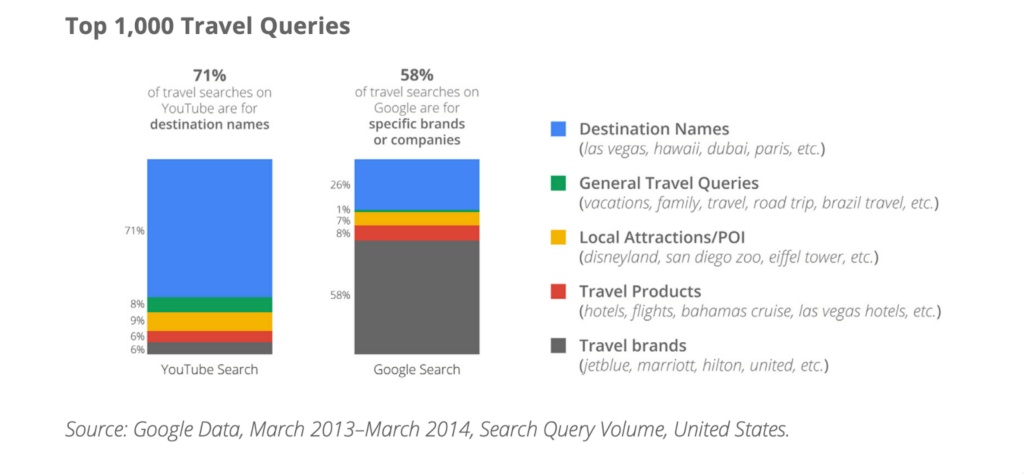
Since then, the use case for video content to plan a trip has exploded. And it’s not just YouTube videos that grab a traveler’s attention. Short-form videos on TikTok, YouTube Shorts, and Instagram Reels aren’t just becoming more popular—they have a surprisingly big impact on destination booking behavior.
A 2023 Google presentation found leisure travelers underestimate the impact content has on their booking behavior. Although travelers ranked content 23rd out of 35 experience elements, behavior analysis found it was actually much more important to their experience—tipping the scale at 7th place.
As Tom van Gessel, a Travel Industry Lead at Google, explained to Booking.com, inspirational content is viewed very early in a traveler’s journey and can make a huge impact.
“I personally didn’t realize how much an aspirational video that I saw online on YouTube or social media channel was unconsciously influencing my decision to visit that destination sometime in the future..Consciously looking back, I realized that I had seen some amazing photos and videos of the cultural sites and coral reefs from Egypt which must have influenced my partner’s and my decision to eventually visit last year.”
Tom van Gessel, Travel Industry Lead at Google
These findings underpin the importance of showing up wherever you can to plant a seed in a travelers mind about why they should pick your destination 👌
5. Interactive Content
Interactive maps and itineraries can provide practical value to travelers planning a trip.
This type of content can offer recommended routes, points of interest, and suggested activities to give your audience a more unique experience of a destination. Whether it’s a food lover’s guide to local restaurants or an adventurous trail for outdoor enthusiasts, interactive content can encourage a traveler to get off the beaten path.
Just look at this map by Kakibot’s Guidebook, a travel vlogger who talks about Edinburgh on their YouTube channel:
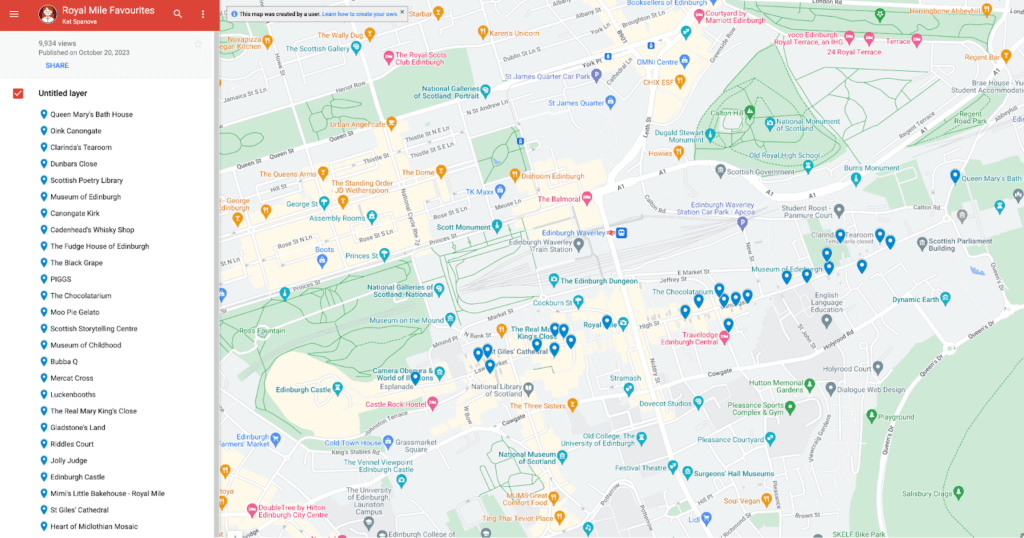
The interactive map can be downloaded straight onto a visitor’s phone and used to guide them through the city.
There are even opportunities for travel companies to use tools like Google’s immersive maps to help people when they arrive at a destination. Thanks to AI and augmented reality, people can use live view to find toilets, taxi stands and car rentals when they land in an unfamiliar city.
Users can now use Live View to navigate airports, train stations, and shopping centers in unfamiliar travel destinations
Google aims to roll out the tech to more than 1,000 new airports, train stations, and malls, which opens up an exciting opportunity for DMOs in any of the launch cities.
6. Audio Content
Finally, don’t forget about audio content.
It’s perhaps one of the least talked about types of travel content, but it still has a place in any DMO marketing strategy if used wisely. Podcasts like The Travel Diaries and Not Lost give listeners a unique experience of a place using interviews with locals, nomads and firsthand accounts of a journey. It’s not the typical “best things to do in a city” type of content… this stuff goes a lot deeper, and their audiences love it.
The Not Lost podcast features the host and a friend visiting destinations to eat and explore—and learn about themselves along the way
Whether it’s tuning in to travel stories during a morning commute or to research a trip, audio content is a great way to offer first-hand experiences through a different lens.
Now you know what kind of travel content is out there, let’s look at how to use it to attract more visitors 👇
Travel Content Ideas for Instagram, TikTok, & More (From Real Creators)
Share Share-worthy Photographs and Images
The easiest travel content to get your teeth stuck into is sharing photos.
Visually stunning, high-resolution images of a destination are the best way to get your foot in the travel content door. With the right strategy, photographs of a destination can have a huge impact on visitor numbers.
Just look at how Trolltunga has turned into a must-do on many people’s lists when they visit Norway. Tens of thousands of people are now convinced to visit the spot every year, which isn’t an easy feat considering travelers must hike for 10-12 hours to reach it.
A report by Trekksoft found the area of Hardanger distributed millions of photos of Trolltunga to magazines, newspapers, and even arranged press events to get the word out. Soon, thousands of images like this were being shared everywhere:
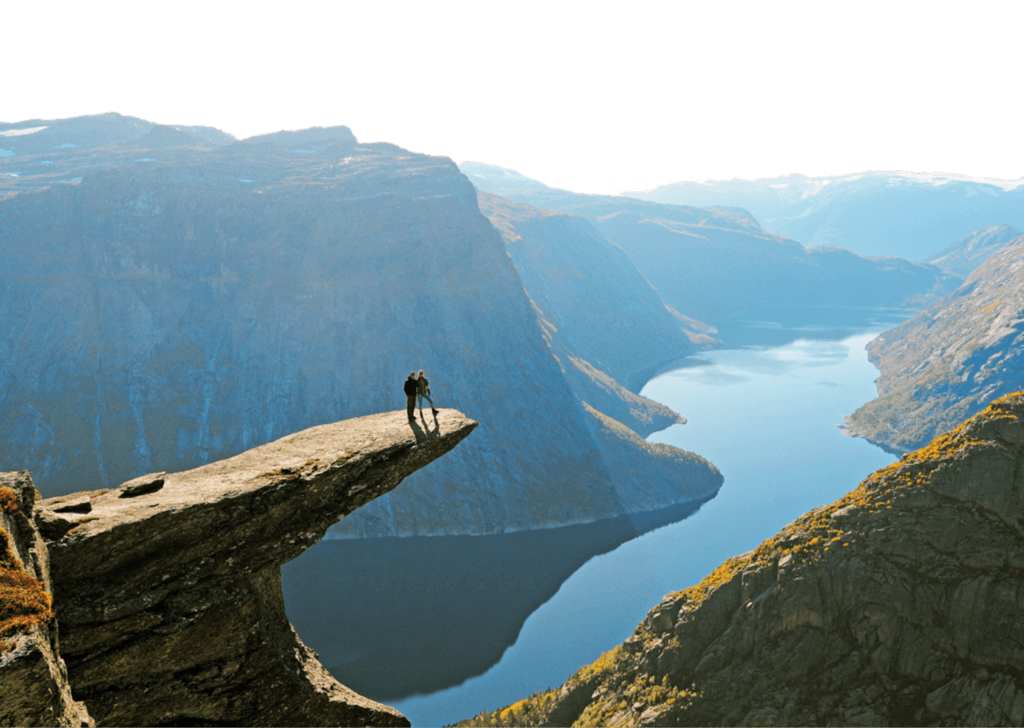
Fjord Norway and Innovation Norway also started using images of the destination to promote Norway as a whole. It worked. The region went from 10,000 visitors a year to over 70,000 thanks to strong collaboration as a tourism destination and one heck of a photography subject.
✨Tip: We recommend that DMOs promote areas that are able to support an influx in travelers, and can help maintain sustainable levels of visitation by partnering with local park authorities.
Use Short-Form Video To Uncover Local Travel Tips
TikTok and Instagram now top the most engagement for any social media platform, so it’s a no-brainer that a strong travel marketing strategy needs to include short-form video content.
While the competition on these channels is fierce, travel content creators can stand out by using local knowledge and tips.
Destination Cleveland uses short-form video content from local creators to showcase its community voice. Thanks to CrowdRiff Creators, fresh content is sourced and clipped together into a narrative. It’s then ready to upload onto TikTok, Instagram Reels, YouTube Shorts or on Google.
“UGC is that way of touching someone in a unique way … and we find those experiences not only resonate with people who live in Cleveland, but people who are looking to visit Cleveland.
It’s not predetermined or pre-organized, but it’s a great way to capture in that moment where they’re experiencing it for the first time … whether they’re visiting Cleveland for the first time and sharing UGC from their trip and their explorations, or going to different attractions, sports events, and restaurants.”
Gabe Waysylko, Destination Cleveland’s social media manager
⚡Pro-tip: Keeping up with social media algorithms is hard. That’s why we put together this Instagram Stories and Reels mega guide. Inside, you will learn how to turn Reel watchers into actual trip-takers when you create conversion-focused content 👇
Create Instagram Stories & Reels that convert lookers to bookers!
EBOOK
Create Instagram Stories & Reels That Convert
Empower Locals To Tell a Story Authentically Through Travel Blog Posts
Encourage followers to participate in user-generated content contests by sharing their own travel experiences and suggestions.
It’s the exact strategy the Icelandic government used to help tourism bounce back after Eyjafjallajökul erupted in 2010. It launched “Inspired by Iceland” in partnership with the city of Reykjavik, Icelandair and dozens of other tourism companies to get the country back on its feet.
The campaign encouraged the public to share images of Iceland using a custom hashtag #inspiredbyiceland, and it was soon fuelled by user-generated content. A specific Instagram account was created to support the campaign and share these images, which now has over 171k followers and its own food recommendations and interactive maps.
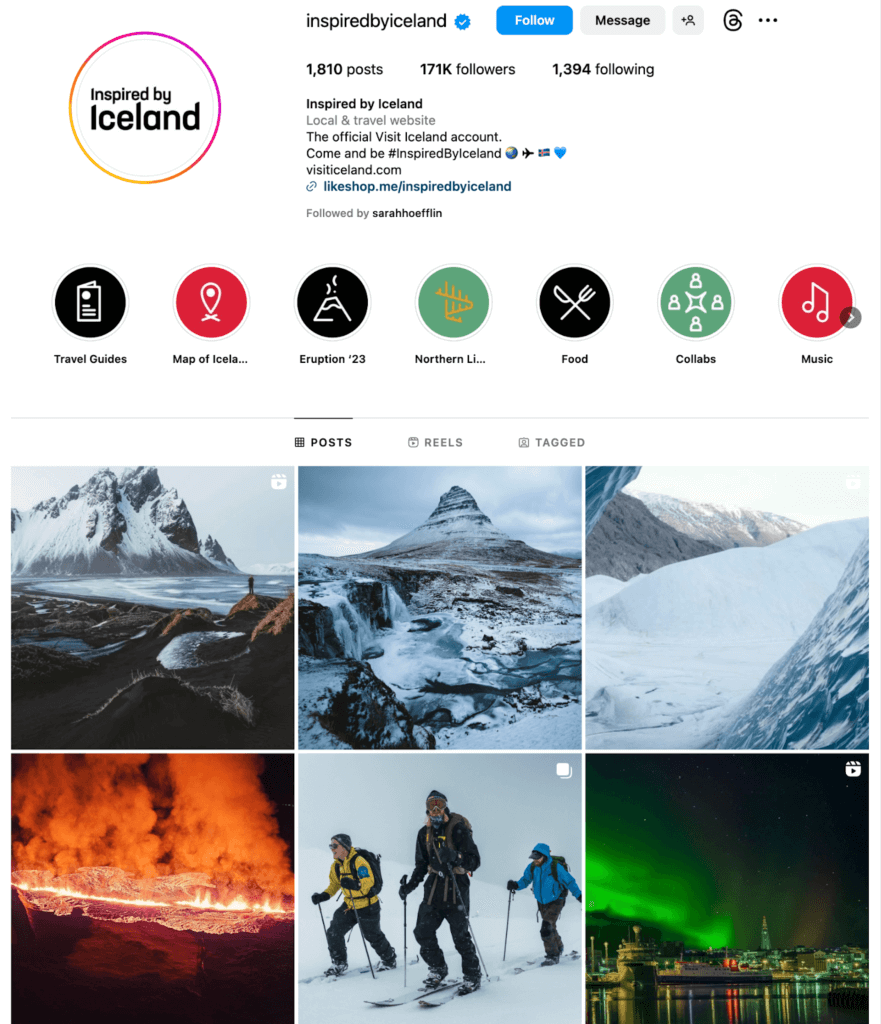
The campaign even found its way onto YouTube, where Icelanders shared their “secrets” using authentic videos. Locals walked viewers through their houses, took them on mountain hikes, and even took them to concert halls. The idea behind the campaign was to give travelers unique tips about how to live like a local if they visited the island.
All in all, the marketing strategy was a huge success. According to stats shared with Google:
- 🔥 267 million impressions across PR, social and paid advertising
- 🔥 1.4 million paid video views on YouTube and over 1.5 million views total
- 🔥 Over 860,000 potential future visitors added to remarketing lists
Collaborate with Other Travel Creators to Expand Your Reach
Partner with fellow travel enthusiasts and influencers to create collaborative content that showcases unique perspectives and diverse experiences.
Travel influencers have already done the hard part to win over their target audience’s trust.
DMOs can use this trust to reach a more diverse audience through authentic and unique content creation. Remember, travel influencers do this stuff for a living… so they’re pretty damn good at it. They can create a unique spin on a destination and sprinkle in their own creative touch while maintaining a visual identity for your brand.
It’s a win-win.
Environmental activist and drag queen, Pattie Gonia, regularly creates content through partnerships to spread the word about unique destinations and events like Earth Day and New York Climate Week to her audience. Her recent collab with Aspen Out to showcase resort’s gay ski week got a ton of traction on her Instagram feed:
Collaborations like this are the perfect way to open up a destination to new eyes and reach an audience who may never have heard of a destination or activity. Plus, these partnerships are ideal to test out custom #hashtags to bring communities together… and have a little fun in the process.
It’s even easier to fuel a #hashtag campaign with the right tools.
CrowdRiff’s improved Instagram Hashtag tracker keeps tabs on every hashtag you use to see what’s resonating with your audience. Inside the dashboard, you can see what hashtags are active and how they have performed for up to 7 days:

Now You Can Make Smarter Decisions About Which Instagram Hashtags You Track – CrowdRiff
If a campaign spikes in popularity, the dashboard will alert you early so you can maximize reach and capitalize on your socials 👌
Travel Content Best Practices for 2024
There are some ground rules to remember when crafting travel content if you want to make it stick:
🎣 Spend time on your hook. Craft attention-grabbing titles, use striking images and draw your audience in with real stories. Their time is important, so make sure your “hook” wins them over.
👀 Make it visual. Take your Instagram game to the next level. Use high-quality images whenever you can to grab people’s attention.
💉 Inject authenticity. Whether it’s a reel of a local market or a map of a secret hiking trail, authenticity is everything in travel content. Take every opportunity to be relatable and human.
Most importantly—be a local.
Whether it’s interviews with residents or showing off local traditions and hidden gems, local tips are one of the best ways to make a destination stand out. That’s why DMOs like Visit Fairfax have grounded their travel content in sharing local tips through blog posts and short-form stories.
Using CrowdRiff Studio, Visit Fairfax recently created a campaign to celebrate local craft breweries during Virginia Craft Beer Month:
Visit Fairfax used a mix of existing B roll and the brewery’s own content to a campaign that told a story. The result was a campaign that was social media, not just by Visit Fairfax but locals, to spread the word about the festival and drive more visitors.
The secret was to let real people tell the story.
“We utilize UGC all the time in our Web Stories, and it’s created a more organic feel to something that has a high-production value,” says Marissa Strang, Destination Marketing Specialist for Visit Fairfax.
“With iPhone photos that people take, our audience gets to see what they love — it’s not just what you as an organization is talking about.”
“We utilize UGC all the time in our Web Stories, and it’s created a more organic feel to something that has a high-production value,” says Marissa Strang, Destination Marketing Specialist for Visit Fairfax. With iPhone photos that people take, our audience gets to see what they love — it’s not just what you as an organization is talking about.”
Visit Fairfax
Again, the right tools can help create these types of campaigns quickly.
With CrowdRiff’s Intelligent Search, you can find assets to match a campaign. For example, if you need landscape-orientated assets for an Instagram reel that already has UGC rights approved, the platform can filter content that ticks all the boxes:

All you need to do is select the assets you like, piece them together to make a reel… and use the Social Publisher scheduler to post immediately or at a set time 🔥
Sourcing great travel content takes time, something a lot of destination marketers don’t always have an abundance of. Find out how CrowdRiff can help – book a walk-through and we’d be happy to take you through it.


